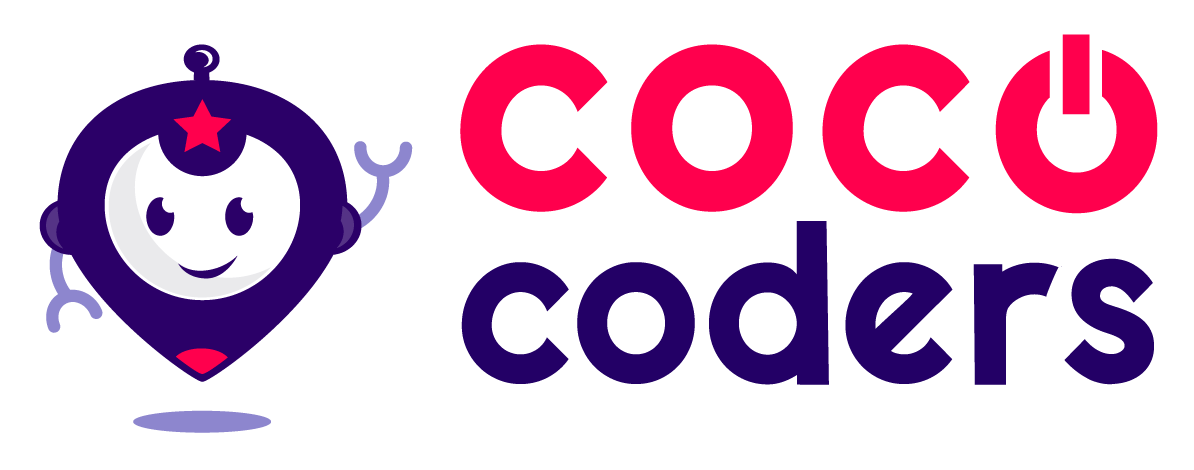How Does Coding Fit Into STEM Education?
At Coco Coders, we know that STEM education plays a pivotal role in shaping the jobs of the future, and this unified approach to teaching is at the heart of our coding lessons. Read on to find out how STEM can prepare your child for the high-tech careers of the future, and how learning to code can support their education.
What is STEM Education?
A great many of us have sat in an algebra class and wondered ‘when am I ever going to need this’. STEM education avoids this. It involves learning about Science, Technology, Engineering, and Mathematics collectively, in a way that reflects real world scenarios. Instead of teaching each of these disciplines in silos, STEM education combines all four in an approach that better reflects how they apply, and thus why they’re helpful, in practice.
It often involves the use of modern technologies, teamwork, interactive activities, and is considered a more engaging way to learn; an opportunity to maximise children’s learning whilst letting them explore their interests and develop their talents in a way that feels more natural than through traditional teaching methods.
Why is STEM Education Important for the Careers of the Future?
Since it focuses on application, STEM education is as dynamic as the fields it refers to. Learning in this way presents students with constant opportunities to challenge their knowledge and work together to take their ideas a step further; a skill that’s highly sought after by employers.
STEM careers are often referred to as the jobs of the future. They drive innovation, economic growth, sustainable development, and it’s hard to name an industry that isn’t in some way dependent on STEM fields. So much so that the STEM sector as a whole is expected to become one of the largest employers in the world. Given there currently aren’t enough STEM graduates to meet the rising demand, the competition in this area is rife, driving salaries in these sectors up to exceed the average of that in other fields.
How Does Learning to Code Fit into STEM Education?
As mentioned above, STEM education is about teaching children the skills they need to solve real life problems using a combination of interdisciplinary disciplines: science, technology, engineering, and maths. The emphasis is on the term “real life” in this definition. Whether or not we’re in love with this idea, the reality is, the children of today are growing up immersed in technology. Screens are part of their daily lives and form part of the ways in which they communicate, learn, and create.
In turn, software and data are integral elements of our workplaces. So, if we want to prepare our children for the future, empowering them with the ability to understand the technologies that will shape it, is a great place to start. This is where coding comes in; it’s the best way to teach children how to develop solutions that solve real-life problems.
Not every child needs to become a part of the IT sector. But an understanding of how programming integrates into different fields will enable them to make career decisions that are right for them and equip them with the fundamental knowledge they need to thrive.
As they learn to code, children learn to visualise abstract ideas and apply their creativity; they learn that if a human mind can envision something, there must be a way to accomplish it. It instils in them a mindset that encourages them to pursue new challenges.
Children begin to recognise the value of failure as a key part of the learning exercise. By working on programming languages, they learn how to take calculated risks, experiment, and break down complex problems into digestible ones; a resilience they can apply to confront the challenges they face throughout their schooling as well as in real life.
Formerly widespread conceptions of an introverted IT “geek” are outdated. Coding education involves children of varying levels collaborating in teams to ideate and create solutions to real-life problems. It's an excellent way to teach children the value of teamwork and strengthen their social and communication skills. In fact, at Coco Coders, we’ve proved just how inclusive this environment can be.
How Can Coco Coders Help?
At Coco Coders, we teach coding to children between the ages of 6 and 12 years old. Our fun and engaging coding classes are delivered through creative themes - such as music, magic or art - that are designed to help children understand the role of technology across a range of sectors, and it’s through this unique approach that we’re able to make technology more accessible to everyone.
According to a recent UNESCO report, only 35% of STEM students in higher education globally are women, a figure that alarmingly drops to 3% when we consider IT studies. Here at Coco Coders a lot of our students are girls. Beyond applying creativity, our exclusive themes involve communication and collaboration between peers, which helps to create an inclusive environment no matter their gender, age, or level.
In our online coding classes, children build their very own games and animations, and can soon see their creations come to life; a process we believe is important in filling them with confidence and enthusiasm to keep learning. We aim to motivate them to explore their passions, equipped with the confidence and the resilience they need to do so.

